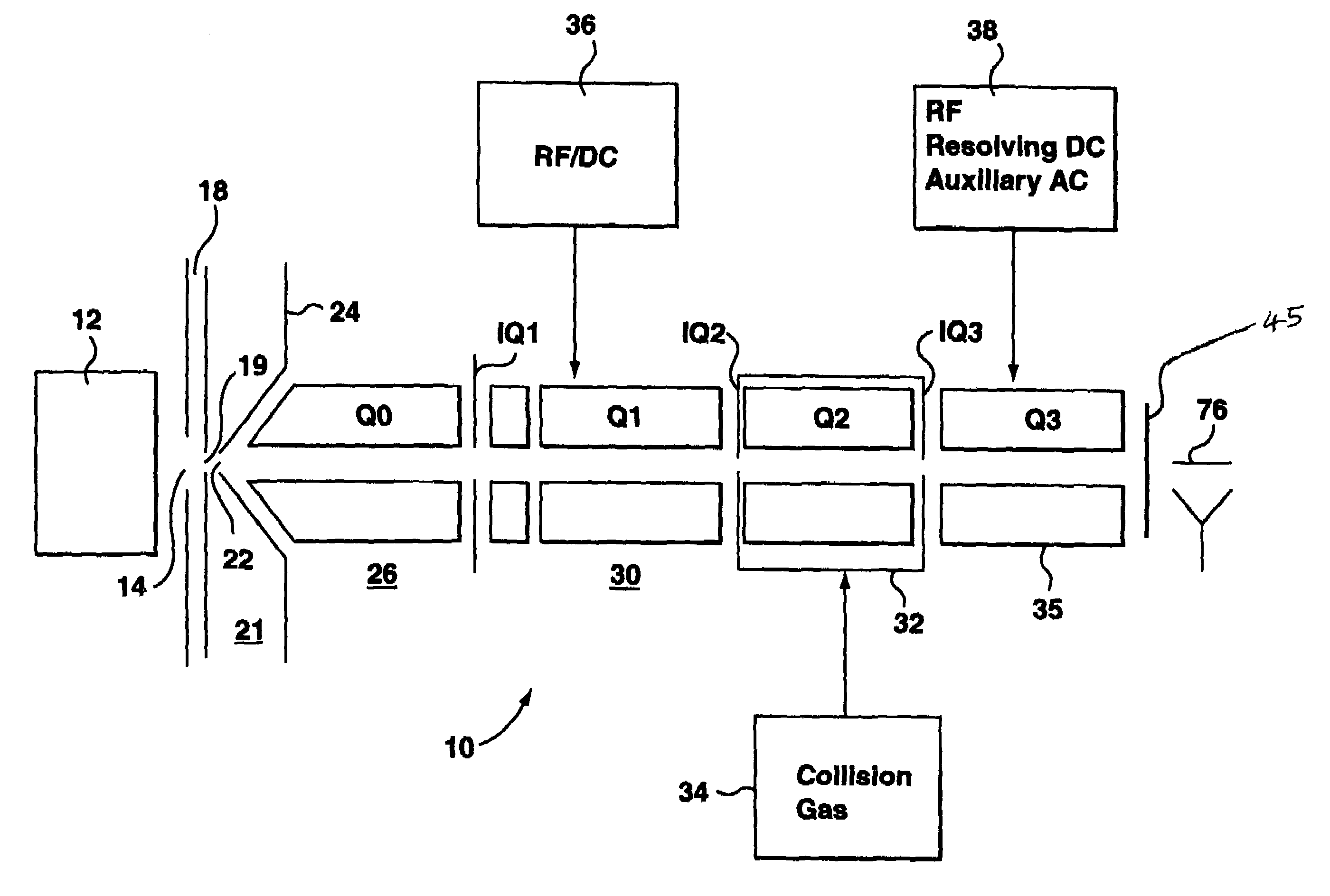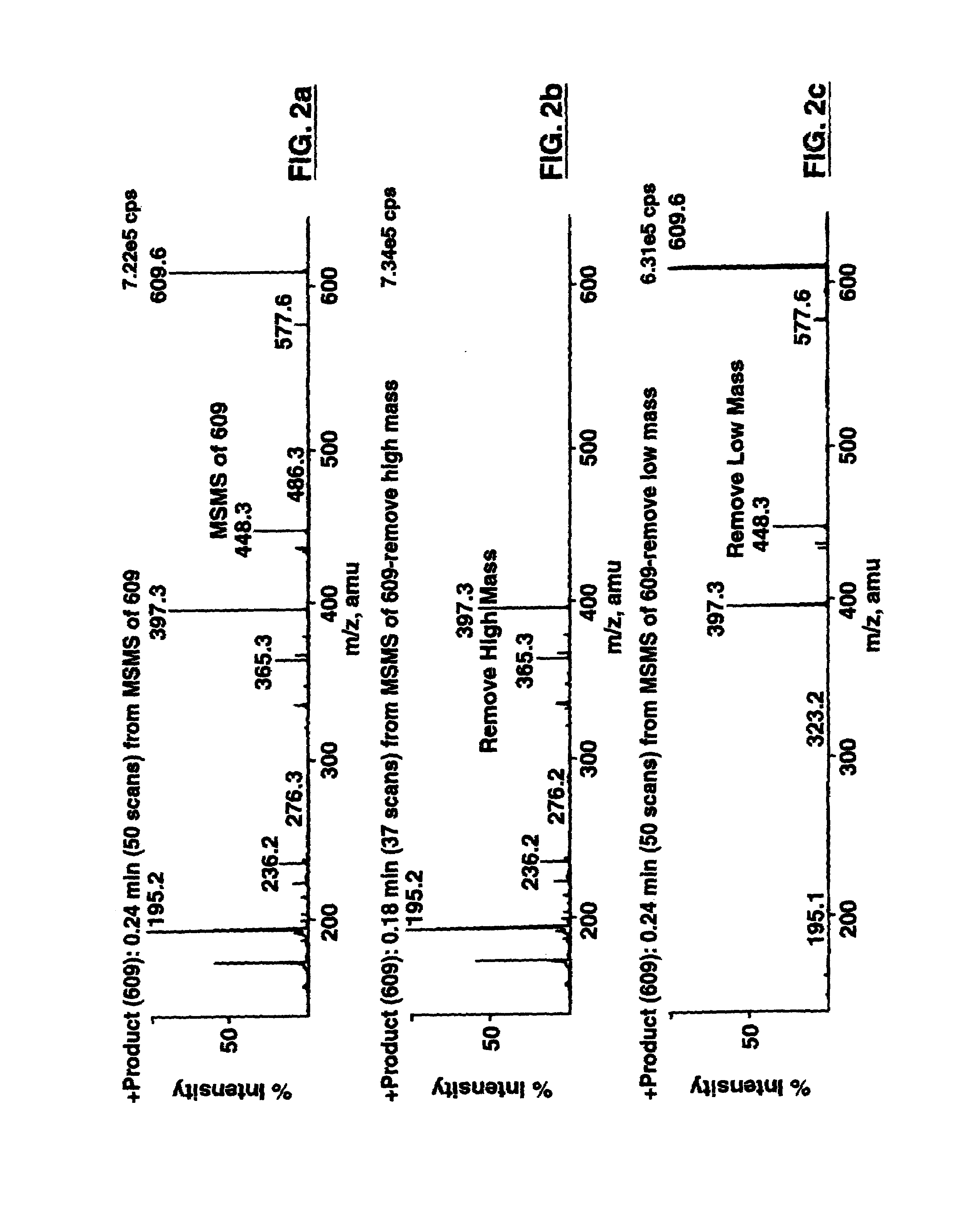Triple quadrupole mass spectrometer with capability to perform multiple mass analysis steps
a mass spectrometer and triple quadrupole technology, applied in mass spectrometers, isotope separation, particle separator tubes, etc., can solve the problems of difficult structural identification of a completely unknown compound, inconvenient data collection of ms/ms spectra for determining the structure of unknown precursor ions, and complex ms/ms spectra with a tqms
- Summary
- Abstract
- Description
- Claims
- Application Information
AI Technical Summary
Benefits of technology
Problems solved by technology
Method used
Image
Examples
Embodiment Construction
[0050]Referring first to FIG. 1, an apparatus in accordance with the present invention is indicated generally by reference 10. In known manner, the apparatus 10 includes an ion source 12, which may be an electrospray, an ion spray, a corona discharge device or any other known ion source. Ions from the ion source 12 are directed through an aperture 14 in an aperture plate 16. On the other side of the plate 16, there is a curtain gas chamber 18, which is supplied with curtain gas from a source (not shown). The curtain gas can be argon, nitrogen or other inert gas, such as described in U.S. Pat. No. 4,861,988, Cornell Research Foundation Inc., which also discloses a suitable ion spray device, and the contents of this patent are hereby incorporated by reference.
[0051]The ions then pass through an orifice 19 in an orifice plate 20 into a differentially pumped vacuum chamber 21. The ions then pass through aperture 22 in a skimmer plate 24 into a second differentially pumped chamber 26. Ty...
PUM
 Login to View More
Login to View More Abstract
Description
Claims
Application Information
 Login to View More
Login to View More - R&D
- Intellectual Property
- Life Sciences
- Materials
- Tech Scout
- Unparalleled Data Quality
- Higher Quality Content
- 60% Fewer Hallucinations
Browse by: Latest US Patents, China's latest patents, Technical Efficacy Thesaurus, Application Domain, Technology Topic, Popular Technical Reports.
© 2025 PatSnap. All rights reserved.Legal|Privacy policy|Modern Slavery Act Transparency Statement|Sitemap|About US| Contact US: help@patsnap.com



